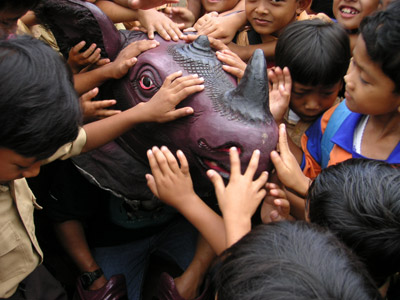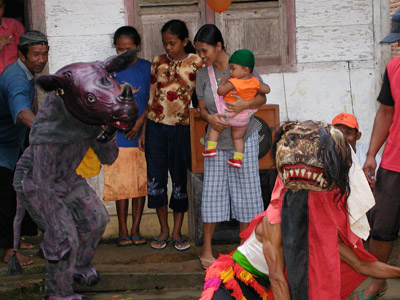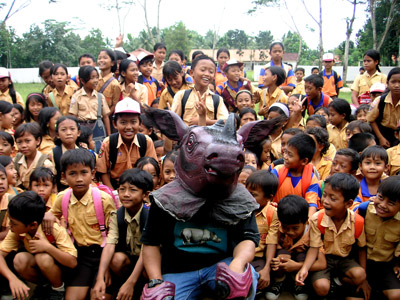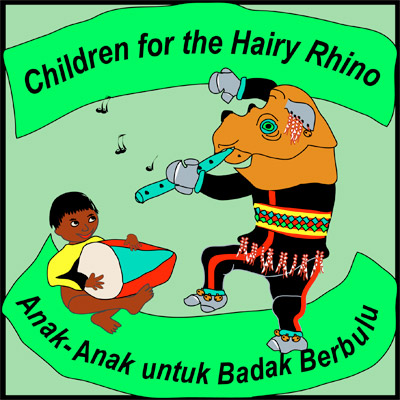Way Kambas Rhino Dance
Children for the Hairy Rhino
 Alongside the story of the rhinoceros that loses his horn but not his pride in the rainforest, rhino doctors and keepers from the sanctuary have brought the hairy rhino to the people surrounding the local Way Kambas village through the medium of dance. One day we would like to start a Rhino and Rainforest Day where traditional children's dance will be performed by local Asian dancers and musicians - featuring a handmade badak dance costume and other rainforest creatures including the blue-jeans frog and pop-eyed papaya bat from the rhino tale. We convey a conservation message by incorporating elements of The Hornless Rhinoceros story into the dance. Indonesian and Malaysian dance represents a magical and traditional way of sharing important moral and ethical values and remains essential to fostering community bonds. Especially critical in today's rapidly changing society where western influences are eliminating many of these irreplaceable ways of life, traditional dance remains a highly respected art form and means of communication in Indonesian culture. While traditional dances incorporating such rainforest animals as tigers and sun bears are known from Sumatra, there has never been a dance celebration for the rhinoceros, thus making ours the first ever Rhino Dance!
Alongside the story of the rhinoceros that loses his horn but not his pride in the rainforest, rhino doctors and keepers from the sanctuary have brought the hairy rhino to the people surrounding the local Way Kambas village through the medium of dance. One day we would like to start a Rhino and Rainforest Day where traditional children's dance will be performed by local Asian dancers and musicians - featuring a handmade badak dance costume and other rainforest creatures including the blue-jeans frog and pop-eyed papaya bat from the rhino tale. We convey a conservation message by incorporating elements of The Hornless Rhinoceros story into the dance. Indonesian and Malaysian dance represents a magical and traditional way of sharing important moral and ethical values and remains essential to fostering community bonds. Especially critical in today's rapidly changing society where western influences are eliminating many of these irreplaceable ways of life, traditional dance remains a highly respected art form and means of communication in Indonesian culture. While traditional dances incorporating such rainforest animals as tigers and sun bears are known from Sumatra, there has never been a dance celebration for the rhinoceros, thus making ours the first ever Rhino Dance!
 Bulu the hairy rhino celebrating with children and parents in Way Kambas Village, Sumatra during the first "Rhino Dance".
Bulu the hairy rhino celebrating with children and parents in Way Kambas Village, Sumatra during the first "Rhino Dance".

Bulu meets with school children from Grades 1 through 6 at the Sekolah Desar Negeri Elementary School near Way Kambas National Park.

